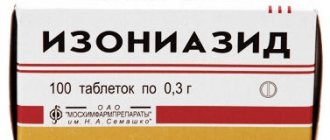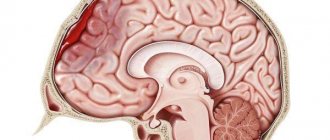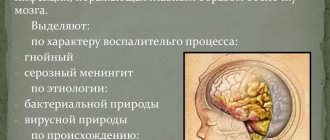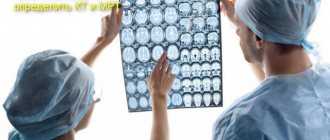- Amoebic meningoencephalitis
Meningoencephalitis is an inflammatory process affecting the membranes and substance of the brain. Despite the fact that the brain is protected by the blood-brain barrier, which prevents most foreign and toxic substances from entering it, some pathogens are still able to pass through it and cause inflammation. Meningoencephalitis, given the importance of the anatomical area it affects, is a life-threatening disease.
Meningoencephalitis is characterized primarily by headache and various nervous system disorders
Causes and risk factors
Meningoencephalitis is most often infectious, but can also be toxic and autoimmune.
Infectious inflammation can be triggered by viruses, bacteria, fungi, protozoa and parasites.
The most common infectious agents of meningoencephalitis are:
| Bacteria | Viruses | Protozoa |
| Neisseria meningitidis, Listeria monocytogenes, Rickettsia rickettsii, Rickettsia conorii, Rickettsia africae, Ehrlichia chaffeensis, Mycoplasma pneumonia, Treponema pallidum, Mycobacterium tuberculosis, Borrelia burgdorferi, Leptospira. | Epstein-Barr virus, herpes simplex virus type 1 and type 2, enterovirus, rabies virus, tick-borne encephalitis virus, West Nile virus, measles virus, varicella zoster virus, mumps virus, HIV. | Naegleria fowleri, Balamuthia mandrillaris, Sappinia Diploidea, Trypanosoma brucei, Toxoplasma gondii. |
Infectious (parasitic) pathogens include Halicephalobus gingivalis from the class of nematodes, the causative agent of cysticercosis (Taenia solium), and echinococcus.
The disease can be caused by the fungus Cryptococcus neoformans. It should be noted that meningoencephalitis of parasitic and fungal origin is extremely rare.
Autoimmune inflammation is spoken of when the cause of tissue damage, in this case the brain tissue and its membranes, is an attack of one’s own immune system. Autoimmune encephalitis can be caused by antibodies to amyloid beta peptide proteins, antibodies to anti-N-methyl-D-aspartate receptor (anti-NMDA; anti-NMDA receptor encephalitis), and several others.
In extremely rare cases, post-vaccination meningoencephalitis occurs.
Purulent meningoencephalitis: causes
The main factor contributing to the development of purulent meningoencephalitis is infection. There are two main routes of infection: primary and secondary. Primary infection of brain structures is caused by direct penetration of neurotropic bacterial (viral) pathogens into them. Secondary infection occurs as a result of the spread of the infectious process beyond the initial focus (otitis, sinusitis), with common infectious diseases (measles, rubella, influenza). The main causative agents of encephalitis are viruses, bacteria, and, less commonly, protozoa and pathogenic fungi. Infection is possible in the following cases:
- Entry of the pathogen into the nasopharynx by airborne droplets or alimentary routes. The pathogen penetrates the cranial cavity through the blood, provokes inflammatory changes in the affected tissues, leading to the development of purulent meningoencephalitis;
- Insect bite. The transmissible route (through a bite) of transmission is characteristic of a number of viral meningoencephalitis and encephalitis (Japanese mosquito encephalitis, tick-borne encephalitis, St. Louis encephalitis);
- The presence of infectious diseases in the body. In the presence of tuberculosis, syphilitic foci, chronic purulent otitis, purulent processes in the maxillofacial area, paranasal sinuses, there is a high probability of the spread of bacterial infection by hematogenous route. Viral meningoencephalitis can occur as a complication of certain acute respiratory viral infections;
- Traumatic brain injury. In case of an open injury with a violation of the integrity of the skull bones, infection occurs by contact;
- Vaccinations. The introduction of a live vaccine against a background of weakened immunity can provoke the development of an infectious process. A post-vaccination complication with the penetration of pathogens through the blood-brain barrier leads to the occurrence of meningoencephalitis.
It is not always the case that a disease develops when a pathogen enters the human body. The reasons contributing to the occurrence of the disease are considered to be a weakened state of the body, the presence of primary or secondary immunodeficiency, and immaturity of the immune system.
Stages of the disease
During meningoencephalitis, the beginning (the appearance of the first signs), the height and the outcome are distinguished. Infectious types of disease also have a prodromal, or latent (latent) stage, which can be asymptomatic or have minor and nonspecific clinical manifestations. The latent period, i.e. the time from infection to the appearance of the first signs of the disease, can last from several hours to several months, depending on the etiology. The height of the disease is characterized by severe and progressive symptoms. The outcome can be recovery or death if brain damage reaches a critical level and affects vital centers.
Some types of disease have stages that are characteristic of them. For example, during meningoencephalitis, three periods are distinguished: the precursor stage (corresponding to the prodromal stage), the stage of excitation, and the stage of paralysis.
Symptoms
The clinical picture of meningoencephalitis is generally similar to that of meningitis. Common signs are changes in personality, behavior, disturbances in thinking, as well as physical symptoms: intense headache, neck pain, stiff neck muscles, hypersensitivity to light and sound stimuli, convulsions. An increase in cranial pressure as a result of inflammation is manifested by blurred vision, dizziness, and nausea.
Let us take a closer look at the clinical manifestations using examples of some types of meningoencephalitis.
Tick-borne meningoencephalitis
Inflammation of the brain and its membranes, caused by a viral infection transmitted by ticks, begins acutely, with an increase in body temperature to feverish values (38 ° C and above), chills, severe malaise, headache accompanied by nausea and vomiting, pain and aches in the muscles and joints. The initial stage is characterized by hyperemia of the face, neck and upper chest, mucous membranes, scleral injection (bleeding in the eyes), inhibited consciousness, which can later turn into a coma. Later, muscle weakness, paresthesia (tingling, numbness) appears, then these muscle groups undergo paresis and paralysis.
Ticks are carriers of viral encephalitis pathogens
Herpetic meningoencephalitis
It has a prodromal (latent) period, lasting several days, during which increasing malaise is noted: body temperature rises, headache, nausea, sometimes vomiting, weakness, fatigue. There are behavioral disturbances that gradually progress, as well as hypersensitivity to external stimuli, especially odors, which can later transform into olfactory hallucinations. In some cases, there is no prodromal period. The height of the disease is characterized by local neurological symptoms (unilateral paralysis, paresis), cognitive impairment (disorders of thinking, memory), lethargy, and the appearance of seizures.
Meningoencephalitis caused by the rabies virus
The onset of the disease is characterized by the appearance of anxiety, increased sensitivity to external stimuli (light, sound, tactile), a slight increase in body temperature, and sleep disturbances. Appetite decreases, dry mouth appears, sweating, tachycardia, sore throat when swallowing, and sometimes nausea. Changes in behavior are noticeable; the patient becomes nervous, rude, irritable, and avoids contact with people.
At the stage of excitation, neurological symptoms develop, photophobia, exophthalmos, breathing disorders appear, and body temperature rises. A characteristic symptom of hydrophobia is: the patient is thirsty, but when he tries to drink, he experiences a strong, very painful spasm of the muscles of the pharynx and larynx, this phenomenon increases, and later the spasm can be caused by just the sight of water, its murmur, or the mention of it. As the disease progresses, painful spasms of the muscles of the pharynx and larynx occur in response to any irritant, even a breath of wind. The patients do not have enough air, and they begin to rush about, looking for a position in which relief will come, which is perceived by others as an attack of rabies. Patients may experience hallucinations and delirium. If death does not occur at this stage, the stage of paralysis develops, during which the patient becomes motionless and stops responding to light. Due to damage to the pelvic nerves, urinary and fecal incontinence develops. Body temperature continues to rise (42 °C). And although it becomes easier for the patient to breathe and drink, this stage ends in death.
The first period of two-wave viral meningoencephalitis
The first period of the disease is characterized by the following clinical picture:
- high temperature that reaches 39 degrees;
- dizziness;
- malaise;
- chills;
- headache;
- vomit;
- nausea;
- myalgia (muscle pain);
- arthralgia (joint pain).
The disease may also be accompanied by mild meningeal symptoms.
The first acute period of two-wave viral meningoencephalitis lasts no more than a week. Upon completion, the patient’s body temperature returns to normal. Typically the remission period lasts about 5-7 days. At this time, the patient disappears all the symptoms that previously bothered him. However, after a week of remission, a new sharp rise in temperature occurs, and the patient’s general health deteriorates sharply.
Meningococcal meningoencephalitis
Damage to the brain and its membranes caused by meningococci is characterized by an acute onset - an increase in temperature to febrile levels, intense headache, and increased sensitivity to any irritants. A characteristic feature of this disease, which distinguishes it from meningoencephalitis of other bacterial etiologies, is that it is often combined with meningococcemia, i.e., the circulation of meningococci in the bloodstream. It is accompanied by the appearance of skin rashes, initially roseolous or roseolous-pustular, and later hemorrhagic, forming rather large blood-red or purple spots on the skin of irregular shape.
Etiology of two-wave viral meningoencephalitis
The disease occurs due to infection of the body with a virus that has a tropism for glial tissues of the brain. At the same time, doctors note that the neurons of the brain almost always remain intact, which distinguishes the disease from other types of encephalitis. The immunological properties of this virus are almost identical to those of the virus that causes tick-borne encephalitis. After the virus enters the body, it first multiplies in the parenchymal organs, after which it gradually penetrates the brain and begins to accumulate there.
Infection of the human body with a virus can occur in two ways:
- The first route, which is called transmissible, involves the bite of an ixodid tick, which is a kind of reservoir of the pathogen and its carrier. Moreover, the disease has a fairly long incubation period - 12-20 days.
- The second, nutritional, route involves infection with the virus due to the consumption of milk obtained from an infected animal. In this case, the virus can infect several people at once, and its incubation period lasts no more than 4-7 days.
Features of the course of meningoencephalitis in children
The course of the disease in children is similar to that in adults, perhaps the difference is a more rapid course of the disease, but also a slightly better prognosis - children are less likely to develop long-term consequences, and they are usually transient in nature.
The disease begins acutely, with high fever (40-41 °C), severe headache, which is not relieved by analgesics and is accompanied by nausea and vomiting, which does not bring relief. The child may be inhibited or, on the contrary, excited; small children may scream monotonously (meningeal cry). Hallucinations, stupor, and coma may occur. Meningeal syndrome is pronounced (rigidity of the neck muscles, pointer dog position - on the side with the head thrown back and legs pulled up to the stomach, positive Kernig and Brudzinsky symptoms, paresthesia, pain phenomena). Seizures occur, but keep in mind that seizures in children can be caused by high fever (called febrile seizures), so they do not necessarily indicate brain damage and should only be assessed in conjunction with other symptoms.
Measles and chickenpox meningoencephalitis are more common in pediatric patients because they are caused by infections that mainly affect children.
General symptoms
The complexity of this diagnosis is that in the first hours of the lesion, the pathogen, which is already “raging” in the body, does not manifest itself in any way. Different forms of the disease show different signs, and even an experienced doctor does not always immediately assume the correct diagnosis. However, the symptoms of meningoencephalitis are not specific.
But if we single out the general symptomatic group of different types of encephalitis, the picture will be like this:
- Hyperthermia;
- Severe headache;
- Disturbances of consciousness - from strong excitement to severe lethargy, delirium;
- Vomiting and persistent nausea;
- Convulsive syndrome (usually in children);
- Meningeal signs;
- The rash is reddish, disappears with pressure (this is a characteristic symptom in children).
Attention! Meningeal signs of Kerning and Brudzinski are stiff neck muscles. If the patient is asked to press his chin to his chest, he will not be able to do this. The patient develops photophobia and increased skin sensitivity.
Kerning's symptom: if the patient is asked to simply bend his leg while lying on his back, and then forced to straighten it, he will not be able to do this if his meninges are affected.
Doctors should do the diagnosis! Do not try to treat a patient with hyperthermia and strange emotional and mental state yourself. Call an ambulance - in some cases the hours count.
Diagnostics
Clinical diagnosis consists of assessing the patient’s mental status, consciousness, and focal neurological symptoms. The presence of hyperthermia and convulsions is determined, and functional tests are performed. When collecting anamnesis, attention is paid to recent events: previous viral diseases, swimming in ponds with dirty water, tick or animal bites, contacts with sick people, etc.
Instrumental and laboratory examination includes:
- spinal cord puncture with analysis of cerebrospinal fluid, i.e. cerebrospinal fluid (an admixture of blood, pleocytosis, and sometimes microbial agents may be detected);
- serodiagnosis (PCR, laboratory blood test, which allows you to determine the type of viral pathogen);
- laboratory analysis of nasopharyngeal swabs;
- laboratory blood test for the presence of specific antibodies (if the autoimmune nature of the disease is suspected);
- magnetic resonance imaging (allows you to assess the condition of the brain and membranes);
- computed tomography (for the purpose of differential diagnosis);
- electroencephalogram (assessment of the degree of brain damage and its functions);
- brain biopsy.
Purulent meningoencephalitis
Differential diagnosis is carried out with other diseases with similar symptoms, depending on the form. For example, amoebic meningoencephalitis can mimic a malignant tumor or abscess (purulent melting of an area) of the brain, some types of autoimmune inflammation are similar to manifestations of schizophrenia or drug intoxication, etc.
It is important that the disease is diagnosed accurately, with the identification of the etiological factor, since the timeliness and effectiveness of treatment depends on this.
Treatment
Suspicion of meningoencephalitis is a reason for hospitalization; treatment is carried out in a hospital setting. Measures are being taken to maintain vital functions and prevent infectious-toxic shock.
Etiotropic treatment depends on what causes meningoencephalitis. For diseases of infectious etiology, antibiotics or antiviral agents are used. Antiviral therapy should be started as early as possible if possible.
Symptomatic treatment is prescribed; specific medications depend on the manifestations of the disease. At high temperatures, antipyretics are used, for convulsions and seizures, anticonvulsants (anticonvulsants, antiepileptic drugs) can be prescribed, and for increased intracranial pressure, diuretics (diuretics).
At the recovery stage, brain stimulants, vitamin therapy, and physical therapy are prescribed.
Possible complications and consequences
The consequences of meningoencephalitis can be short-term and long-term. Both the first and second include neurological deficits of varying severity, depending on how much brain tissue is damaged. These may be disturbances in hearing, vision, coordination, speech, gait, motor function disorders, paresis, paralysis, and personality changes. To minimize damage to the brain, a quick and accurate diagnosis, timely and correct medical care, and after recovery, in most cases, neurological rehabilitation, the scope of which is determined individually, are necessary.
Forecast
The prognosis is generally unfavorable, although it varies depending on the form of the disease and the state of the patient's immune system. Poor prognostic signs include the occurrence of cerebral edema, status epilepticus and thrombocytopenia. Good – normal encephalogram results.
Some species extremely rarely cause death, in most cases passing without a trace - these include meningoencephalitis in children caused by the chickenpox virus. However, this is the exception rather than the rule.
Meningoencephalitis often leads to severe damage to brain tissue and ends in death. If the patient is saved, he is often left with lifelong neurological deficits that result in disability.
Classification
In neurology, encephalitic meningitis is classified depending on the cause and course of the inflammatory process. Based on the root cause, pathology is divided into:
- Primary form. It occurs as an independent disease due to a tick bite infected with an arbovirus, an exacerbation of the herpes virus, infection with rabies, neurosyphilis, and typhoid.
- A secondary form that occurs as a result of complications of measles, tuberculosis, chickenpox, and other ailments of infectious origin.
According to the type of infectious agent, meningoencephalitis is divided into:
- Viral (caused by cytomagalovirus, varicella-zoster, enterovirus, measles virus, rabies virus, herpes simplex virus).
- Bacterial (provoked by Haemophilus influenzae, Listeria, Staphylococcus, Rickettsia, Tuberculosis Bacillus, Meningococcus, Pneumococcus).
- Protozoal (develops when the central nervous system is damaged by protozoan microorganisms - agents of malaria, toxoplasma).
- Fungal, diagnosed mainly in patients suffering from immunodeficiency.
According to the type of pathology, meningoencephalitis is distinguished:
- Serous, characterized by the formation of serous discharge and an increased concentration of lymphocytes in the bloodstream.
- Brucellosis, in which the soft membranes of the brain are damaged, which provokes the formation of brucellosis granules. The patient experiences paralysis and neuropsychiatric disorders. It is necessary to treat the pathology for a long time.
- Purulent, occurring with the presence of pus and clouding of the cerebrospinal fluid.
- Hemorrhagic, accompanied by impaired permeability of the walls of blood vessels and small capillary hemorrhages.
- Tuberculous. Diagnosed in children under one year of age and in adults suffering from tuberculosis. Manifests itself as a result of secondary inflammation of the meninges. Accompanied by regular headaches, general weakness, anxiety, loss of appetite, and insomnia.
Depending on the nature of development, the disease is divided into the following types:
- Lightning fast (often ending in death a few hours after the development of pathology).
- Acute (the pathological process develops within 1-2 days).
- Subacute, with an increasing symptom complex over 7-10 days.
- Chronic, in which the disease occurs with periodic exacerbations and remissions over several months or years.
Prevention
The specific and most effective preventive measure is vaccination against certain forms of meningoencephalitis. There are vaccines against meningococcus, the causative agent of tuberculosis, influenza virus, measles, tick-borne encephalitis and a number of others.
Non-specific methods of prevention include maintaining the body's defenses at a high level, which includes following the rules of a healthy lifestyle, as well as observing the rules of sanitation and personal hygiene.











